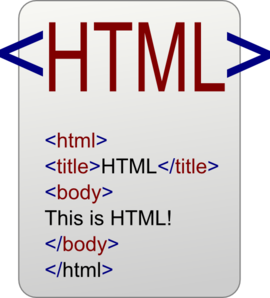
6 Practical Tips for Creating Flawless Facebook Posts
October 1, 2025
Insights from HubSpot’s Top 10 Inbound Marketers
October 1, 2025 A previous post listed out the benefits of sending out a clean, non-HTML email. Still, depending on your email marketing strategy and approach, there are enough advantages to using HTML email:
A previous post listed out the benefits of sending out a clean, non-HTML email. Still, depending on your email marketing strategy and approach, there are enough advantages to using HTML email:
– Branding: Include your company logo.
– Recognition: Make your emails feel like your website with a similar design.
– Tracking: Estimate the number of times your messages are opened by recipients. You can’t track the open rate of a text email.
– Highlighting: Use bold, colors, and fonts to draw attention to important parts of your message.
– Compatibility: Send HTML and text messages at the same time and email programs that can’t display HTML will automatically display the text-only message.
– Images: Display images to reinforce your message, but make sure the email still looks okay with images turned off.
If you have a product or service that is best presented visually e.g. a TV, notebook etc., then HTML is the way to go because people will want to see it. If you are simply describing the product update or service, such as “we’ve upgraded our database infrastructure” then text is the right choice.
– Links: Have website links with text descriptions instead of long ugly URLs. A graphical call-to-action button also has a positive impact on click-through rate.
– Familiarity: It’s easier for recipients to scan HTML emails when they become accustomed to your layout.
HTML for email is significantly different than designing for a website. Special care was taken in designing these templates for:
– How messages look when images are turned off.
– HTML display in popular e-mail clients such as Outlook, Mozilla Thunderbird, Eudora, etc.
– HTML display in popular web clients like Yahoo!, Hotmail, and Gmail.
– CAN-SPAM compliance with postal address and unsubscribe link inclusion.
Testing-wise, the best way to understand how different browsers, email clients, and mobile devices interpret your HTML email is to see for yourself! To save yourself the trouble of testing every single email send, test a few options once, and then create a template to use for each email you send using the winning version.
The issue of whether you stick to sending a text or HTML email or both will depend on the context of your message, your target readers, and the click-through performance you are aiming for. You should test-send an email to yourself so that you can consider your own reaction towards reading it. The general rule of thumb is to send short and sweet text emails to recipients who do not know you well and HTML emails to known contacts.
{{cta(‘e1ae3ca5-1611-4bdc-8228-076d0a897544’)}}


